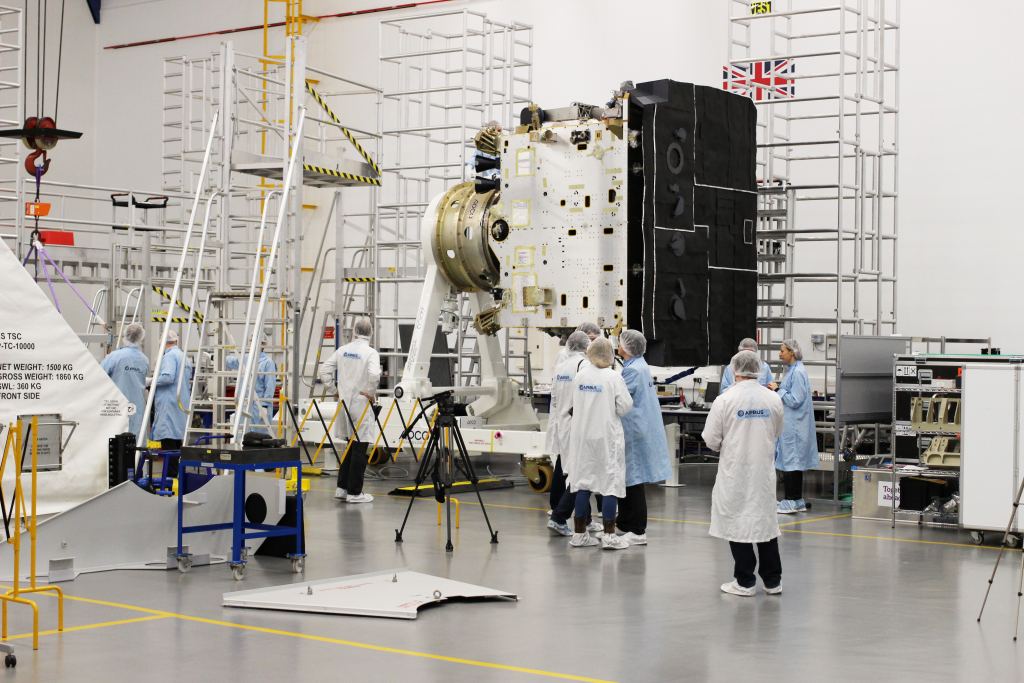Solar Orbiter’s unique vantage point recently allowed researchers to make a crucial observation of the solar system’s innermost world.
You never know when a chance for some extra space science will present itself. Recently, European Space Agency (ESA) mission controllers had just such a chance, when the planet Mercury passed in front of our host star as seen from the Solar Orbiter’s point of view in space.
Also known as SolO, ESA’s Solar Orbiter mission launched on a United Launch Alliance Atlas V rocket from Cape Canaveral Space Force Station in Florida on February 10, 2020, on a mission to explore the Sun. Specifically, Solar Orbiter will make up close observations of the deep heliosphere and the nascent (emergent) solar wind, as well as make passes over the solar poles, which are regions that are difficult to observe from the Earth.

To accomplish this, SolO carries a suite of instruments, including its Polarimetric and Helioseismic Imager (PHI) and the Extreme Ultraviolet Imager (EUI), both of which witnessed and documented the January 3, 2023 transit of the innermost planet. All of these instruments sit behind a massive heat shield, needed to survive the intense heat of the blistering perihelion passages that the mission must endure.
None More Black
Beyond just a unique view of a rare celestial scene, the silhouette of Mercury allowed researchers a one-time, sharp-edged calibration target that was absolutely black: even ragged-edged sunspots and deep space (which is still dappled with faint stars) doesn’t provide such a view in context with the dazzling Sun.
“It’s not just looking at Mercury passing in front of the Sun, but passing in front of the different layers of the atmosphere,” says Miho Janvier (Institut d’Astrophysique Spatiale-France) in a recent press release.
Indeed, this offered engineers a one time chance to compare the view from their instruments versus a truly black target. “It is a certified black object traveling through your field of view,” says Daniel Müller (ESA-SolO Project Scientist) in a recent press release. Any light recorded by an instrument on the disc of Mercury must be the result of light generated by the instrument, and can be accounted for an adjusted.
SolO is part of a flotilla of missions set to scrutinize the our host star like never before, as Solar Cycle 25 gets underway in earnest. We saw evidence of this increase in activity earlier this week, as a powerful solar storm sparked aurora for mid- to high- latitudes. Views from SolO will compliment observations from NASA’s Parker Solar Probe, the Solar Dynamics Observatory and the joint ESA/NASA Solar Heliospheric Observatory (SOHO).
SolO made an Earth flyby on November 27, 2021 on its journey to the inner solar system, and completed its first perihelion pass 0.5 AU from the Sun in February 2021. Its next perihelion pass at 0.29 Astronomical Units (AU) (27 million miles or 43.5 million kilometer) from the Sun occurs on April 10, 2023, and a series of passes near Venus which started in 2020 will set the mission up for passes over the Sun’s poles, starting in 2025. SolO has a seven year nominal mission.

Why Transits
Transits have been vital tools throughout the history of astronomy, right up through modern times.
Astronomers Jeremiah Horrocks and William Crabree was the first astronomers to predict and observe a transit of Venus in front of the Sun on December 4, 1639. Once predictions got more accurate, astronomers realized that observations of transits (mainly of Venus) could be used to measure size and distance in the solar system, sparking some of the first global international scientific expeditions of the 18th and 19th centuries.
Fast forward to the 21st century, and transits still have scientific value, as astronomers use them to discover exoplanets around distant stars. While these faint tell-tale dips in brightness are a dead giveaway for planets orbiting a host star, the method does have drawbacks: most planets do not transit from our line of sight, and the ones that do tend to be ‘hot Jupiters’ close in to their host star, which are much more likely to transit from our point of view.
When’s the next transit of Mercury? As seen from our Earthly vantage point, Mercury transits the Sun 13 times for this century. The last one was on November 11, 2019, and the next one isn’t until November 13th, 2032.

It’s amazing to think that one of the oldest astronomical techniques of simply catching one body passing in front of the other is still yielding scientific value, and aiding a modern spacecraft on its mission to unlock the secrets of the Sun.

